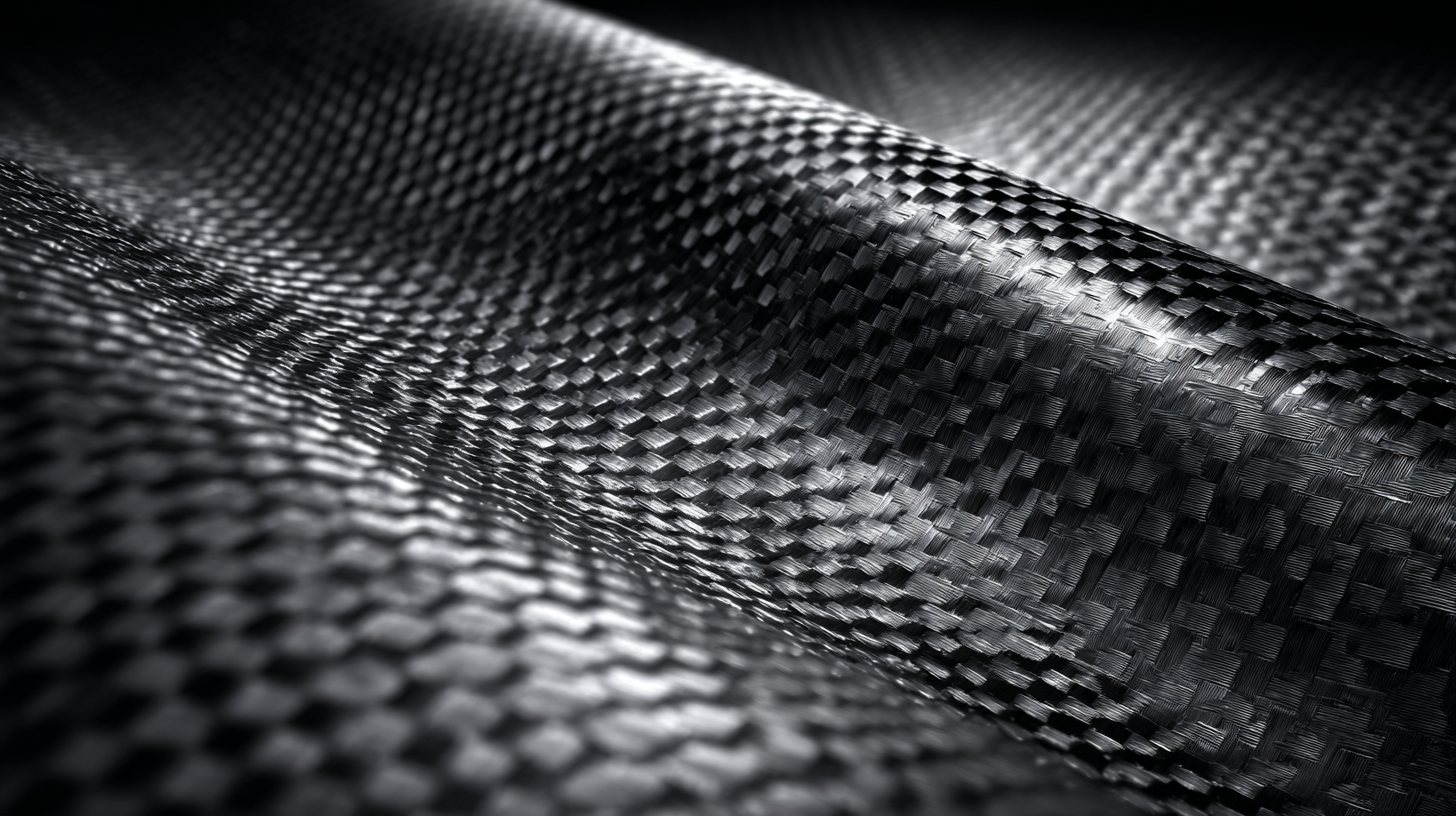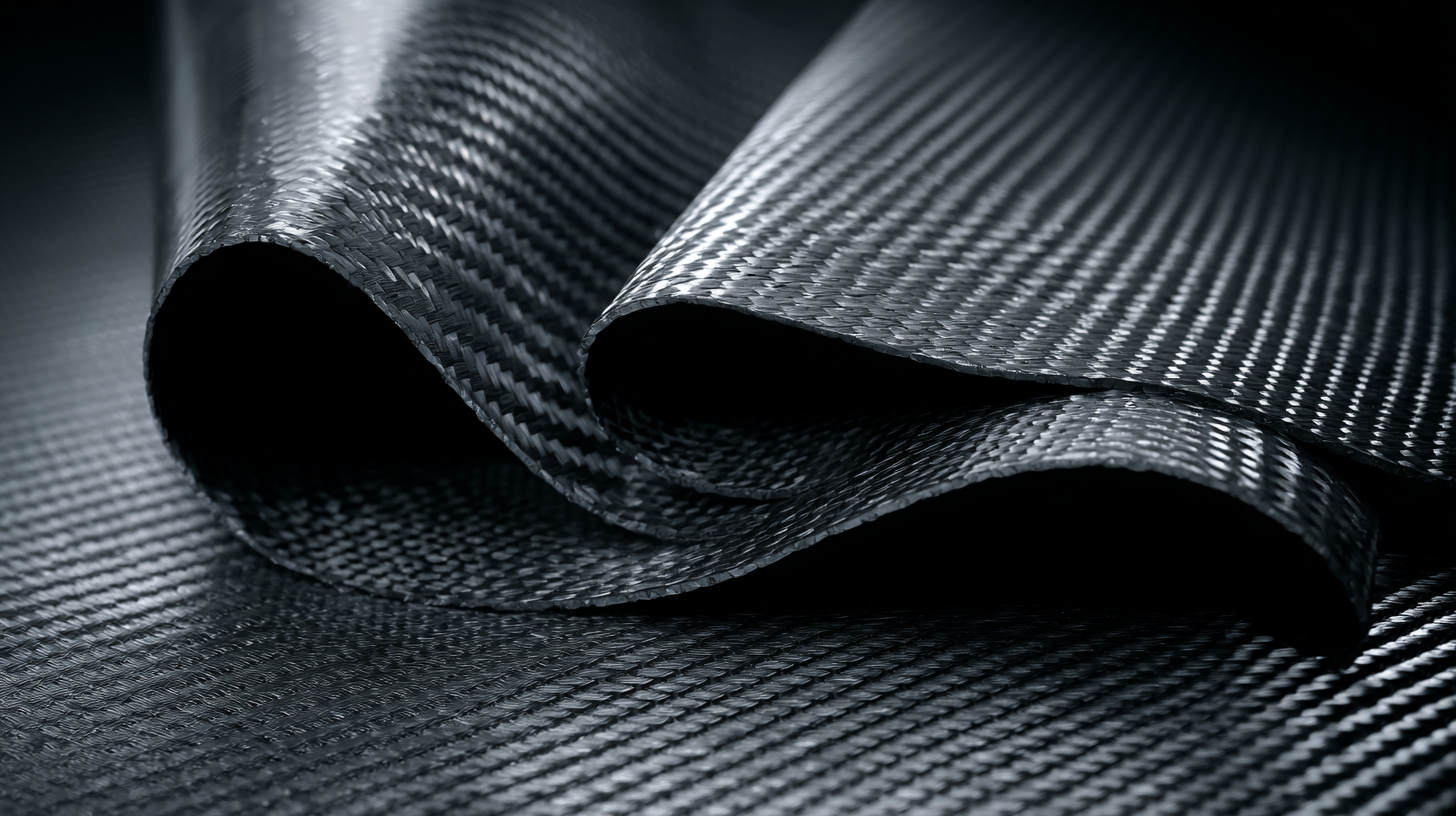
-
Home
-
Products
-
About Us
-
News
-
Blog
-
Video
-
Contact
Leave Your Message

In today's competitive market, the demand for Large Carbon Fiber Sheets has surged, driven by their unparalleled strength-to-weight ratio and versatility across various applications, including aerospace, automotive, and sporting goods. According to a recent report by the Global Carbon Fiber Market Analysis, the industry is projected to reach a staggering $5 billion by 2025, with a compound annual growth rate (CAGR) of 10% from 2020 to 2025. This significant growth underscores the need for manufacturers to not only provide high-quality materials but also enhance their after-sales support to maximize customer value. Selecting a reputable manufacturer that offers superior service can make all the difference in ensuring the optimal performance and longevity of large carbon fiber sheets, ultimately impacting the overall success of projects across numerous sectors.

As we look ahead to 2025, the field of large carbon fiber sheets is poised for dramatic advancements driven by emerging technologies. One notable trend is the incorporation of automation in the manufacturing process, which is expected to enhance precision and reduce production costs. Advanced robotics will streamline the scaling of large carbon fiber sheets, enabling manufacturers to meet increasing market demands while ensuring consistent quality. Additionally, the use of AI and machine learning will allow for real-time data analysis, optimizing production lines and minimizing waste.
Another exciting development is the potential for novel composite materials that push the boundaries of strength and weight reduction. Innovations in resin systems and fiber alignment technology may lead to large carbon fiber sheets that are lighter, stronger, and more versatile than ever before. These advancements not only promise improved performance in aerospace and automotive applications but also open new avenues for industries such as construction and renewable energy. As we reach 2025, the confluence of these technologies will redefine the possibilities of large carbon fiber sheets, creating immense value for manufacturers and customers alike.
The recent advancements in carbon fiber manufacturing processes and materials have transformed various industries, particularly within the realm of cycling and automotive engineering. With the carbon fiber bicycle fork market valued at $120 million in 2022 and projected to reach $230 million by 2030, a compound annual growth rate of 11% signifies a robust demand for innovative materials. This growth reflects an increasing interest in lightweight yet durable components, driving manufacturers to focus on superior production techniques that not only enhance performance but also sustainability.
 Innovations such as the introduction of recyclable thermoplastic carbon fiber frames are setting new industry standards. This prototype, which significantly reduces the environmental impact of traditional carbon fiber production processes, showcases how manufacturers can balance high performance with ecological responsibility. Additionally, automated production lines are streamlining the manufacturing process, improving efficiency and consistency in product quality. As the civil engineering sector embraces fiber-reinforced composites, the unique advantages of these materials are expected to play a pivotal role in shaping the future of construction and design.
Innovations such as the introduction of recyclable thermoplastic carbon fiber frames are setting new industry standards. This prototype, which significantly reduces the environmental impact of traditional carbon fiber production processes, showcases how manufacturers can balance high performance with ecological responsibility. Additionally, automated production lines are streamlining the manufacturing process, improving efficiency and consistency in product quality. As the civil engineering sector embraces fiber-reinforced composites, the unique advantages of these materials are expected to play a pivotal role in shaping the future of construction and design.
In the competitive landscape of carbon fiber materials, superior after-sales support is critical in maximizing customer satisfaction and retention.
According to a report by Gartner, companies that prioritize customer experience can achieve a 20% increase in revenue growth
compared to their competitors. This highlights the necessity of integrating robust after-sales service into business strategies, especially in industries that demand high-value products like
large carbon fiber sheets.
Effective after-sales support not only addresses post-purchase inquiries but also provides valuable resources for customers, such as installation guidance and maintenance tips.
A study from McKinsey & Company indicates that up to 70% of customers value the quality of support they receive after a purchase,
directly influencing their likelihood of repeat business. By ensuring a seamless after-sales experience, manufacturers of carbon fiber sheets can foster loyalty, enhance user satisfaction,
and ultimately drive long-term profitability. Investing in a dedicated customer support team can thus transform a transactional relationship into a
strategic partnership, aligning with the industry’s move towards personalized service and sustainable growth.
As industries seek innovative materials to enhance performance and reduce weight, large carbon fiber sheets have emerged as a leading choice compared to traditional materials like aluminum and steel. According to a report by MarketsandMarkets, the carbon fiber market is estimated to reach $5.3 billion by 2026, driven largely by the aerospace and automotive sectors. This growth can be attributed to carbon fiber's superior strength-to-weight ratio, which is about five times stronger than steel while being significantly lighter. Such properties enable manufacturers to improve fuel efficiency and reduce emissions in automotive designs.
Furthermore, large carbon fiber sheets provide enhanced durability and resistance to environmental factors compared to conventional materials. A study from the Journal of Composite Materials highlights that carbon fiber composites exhibit excellent fatigue resistance and corrosion resistance, making them an ideal choice for applications in high-stress environments. In contrast, traditional materials often succumb to rust, wear, and tear over time, leading to increased maintenance costs. Therefore, the ongoing adoption of large carbon fiber sheets in various industries is not merely a trend; it reflects a critical shift towards materials that offer longevity and performance, underscoring their value in modern engineering applications.
This chart displays a comparative analysis of large carbon fiber sheets and traditional materials based on various properties such as weight, tensile strength, flexural modulus, thermal conductivity, and cost. It highlights the advantages of large carbon fiber sheets in terms of performance and efficiency.
Implementing carbon fiber solutions across various industries can lead to significant advancements in product performance and durability. One best practice is to conduct a thorough needs assessment before integrating carbon fiber materials into existing processes. Understanding the specific requirements and limitations of each application helps organizations select the right type of carbon fiber sheets and maximize their benefits. This tailored approach ensures that the material's lightweight and high-strength characteristics are leveraged effectively, enhancing the overall functionality of products ranging from aerospace components to automotive parts.

Another important aspect is collaboration with suppliers who offer superior after-sales support. This support not only includes guidance on installation and maintenance but also encompasses education on best practices for using carbon fiber sheets. Engaging with experts can help companies troubleshoot issues and optimize their production processes, thereby reducing operational downtime. Continuous training and updating of knowledge about advancements in carbon fiber technology empower teams to stay ahead in the competitive landscape, leading to improved product quality and customer satisfaction.